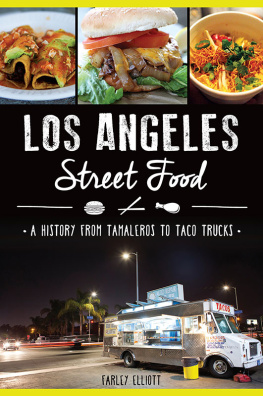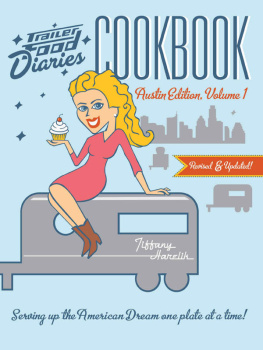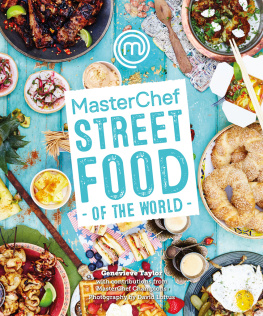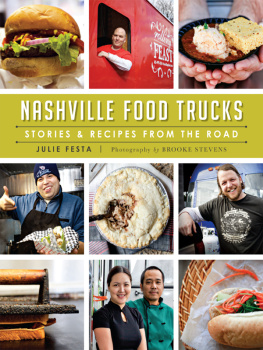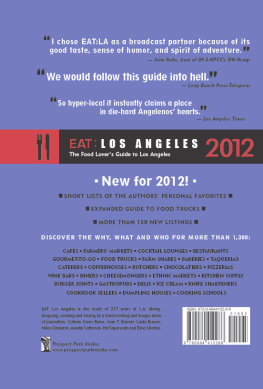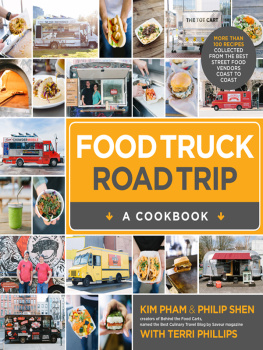


Published by American Palate
A Division of The History Press
Charleston, SC 29403
www.historypress.net
Copyright 2015 by Farley Elliott
All rights reserved
First published 2015
e-book edition 2015
ISBN 978.162585.516.9
Library of Congress Control Number: 2015940377
print edition ISBN 978.1.62619.991.0
Notice: The information in this book is true and complete to the best of our knowledge. It is offered without guarantee on the part of the author or The History Press. The author and The History Press disclaim all liability in connection with the use of this book.
All rights reserved. No part of this book may be reproduced or transmitted in any form whatsoever without prior written permission from the publisher except in the case of brief quotations embodied in critical articles and reviews.
Dedicated to the tireless men and women who get up early and stay up late to make sure this golden city of ours remains well fed.
And to Kelsi Copeland, who is the great passion and architect of my life. This book has as much of her hard work in it as mine.
Contents
Foreword
For more than 150 years, Los Angeles has been a street food capital, going back to the tamale wagons that were documented as early as the 1870s, although they may have been around even longer according to Taco USA author Gustavo Arellano. The tradition continued on L.A.s first street, Olvera Street, in 1934 with El Cielito Lindo and the innovation of the catering truck by L.A.s Mexican community, repackaged by chef Roy Chois Kogi BBQ truckbut thats only part of the story.
Today in Los Angeles, there have never been more avenues to explore for street food, whether it be a food truck, street stand, taqueria, restaurant, underground restaurant in a private home or a market stall. Thats not because of the growing street food craze all over the United States but because weve slowly revealed the layers of cuisine that have existed all along, hidden in cultural enclaves. To even a dedicated explorer such as myself, the exposed underbelly of L.A.s itinerant dining scene has only revealed a call for a deeper journey into still undiscovered street food gems that await. Yes, its the urban sprawl, and its the ever-changing patterns of immigration, but really its our lifestyleAngelenos love street food.
From the Mexico Citystyle al pastor and Jaliscan tacos de fritanga vendors in South Central Los Angeles to the Capulhuac barbacoa specialists in Jefferson Park to the Guatemalan tamal and tostada vendors in MacArthur Parkand even at the fancy graphic-wrapped and Twitterized food trucks on the Miracle Milestreet food is what feeds us. Food trucks were popular in Los Angeles first, when Mexican American vendors started to buy catering trucks to satisfy the cravings of construction workers and ESL students and then took to parking them just about anyplace where Latinos gathered. This spread throughout the United States in small waves, and then came chef Roy Chois Kogi.
The Kogi truck ushered in a new worldwide movement of food trucks with all roads leading back to Los Angeles, where the growing audience not only embraced the shiny, international foods offered and the chef-driven trucks but also looked back to the classics like Mariscos Jalisco, Tacos Leo and Tacos Los Gichos. The climate was never better for Ensenada native Ricky Pia of Rickys Fish Tacos to get his own truck. Fast forward a few years from there to the ultimate Los Angeles truck, Guerrilla Tacos, a concept by Mexican American chef Wes Avila, who has taken the Los Angeles taco to new heights.
Simply put, L.A. has the best street food scene, including Mexican, Guatemalan, Salvadoran, food trucks and the various Asian cuisines that Los Angeles does so well: Chinese, Korean and Thai. Though the Asian restaurateurs prefer brick-and-mortar locations, many still rely on street food menus, and for everything else there are the 626 Night Markets, which have brought some of those great Asian dishes back down to our level: the street. Weve led the way from the tamale wagons to taco trucks to the commercial trucks to the growing regional specialists that sprinkle their spices all over the Los Angeles landscape. Its the greatest street food show in the country, and weve still yet to discover it.
BILL ESPARZA
Los Angeless premier street food writer and chronicler of all things Mexican food
Acknowledgements
This book is a group effort, composed of more people than can ever fully be named here. A few notables, though:
Noam Bleiweiss
Brett Morris
Paul Bartunek
Clay Larsen
Liezl Estipona
Julia Reed
Jakob N. Layman
Amy Scattergood
Matt Kang
Bill Esparza
Tony Chen
Serious Eats
LA Weekly
Eater
Republique
Dinosaur Coffee
Sqirl
Introduction
First and foremost, this book is meant to be a tool, so use it as you see fit. Throw it in your glove box or tear pages out and hand them to friends in their moments of street food need. Keep it in a glass case behind a sign that says, Break only in case of taco emergency. Its yours to enjoy and destroy. After all, what good is a book that covers tacos, tamales, bacon-wrapped hot dogs, Taiwanese grilled meat skewers and ice cream sandwiches if it cant stand to get a little messy?
In lots of ways, it is messiness that defines Los Angeles. We dont give people directions based on addresses or, as in New York, intersections. We talk in imprecise travel times and general compass navigations, using landmarks to guide us through neighborhoods that change drastically by the block. Its a messy town, full of cars and people and smog, with no cleanly defined center to speak of.
But it is in that messiness that we Angelenos thrive. Many of our street vendors are illegal and our immigrants undocumented, but beneath that legal murk, there is a simmering subculture that truly warms this city. It always has been, and always will be, a place for people escaping something else.
We are the second-largest Mexican city in the world by population. There are more Koreans here than anywhere else on the planet, outside of Korea itself. Los Angeles is the permanent home for nearly half a million Chinese and roughly as many Armenians. We have Guatemalans, Iranians, Indians, Japanese and Brits, all fitting together in a loose jumble covering almost five thousand square miles. Thats awesome.

Shrimp tacos dorados from the Mariscos Jalisco truck. Paul Bartunek.
And because of this diversity, because we have chosen to build out instead of up, Los Angeles has come be known as a world-class street food city. We have the space for it, the background for it and the hunger for it, and more and more the rest of the world is beginning to see the truth. You can sample cuisines from all across the globe just by spending an afternoon in L.A. and eat better on the streets than in most restaurants across America.
This book helps to define where Los Angeles is, right now, as a street food city. Its about where the city has come from and where it stands now, on the verge of major street food regulation reform. Its about the types of street food you can enjoy here, from carts and tables to taco trucks and gourmet catering outfits, with farmers markets and food festivals thrown in for good measure.
Next page
